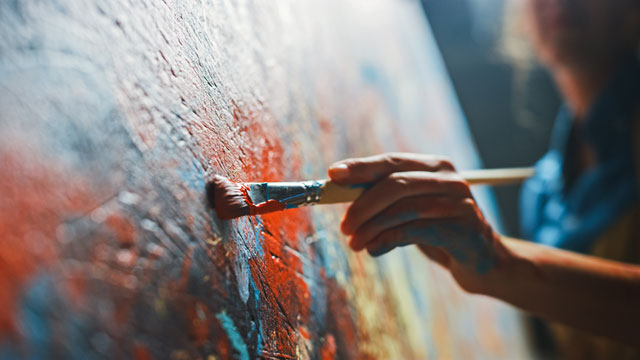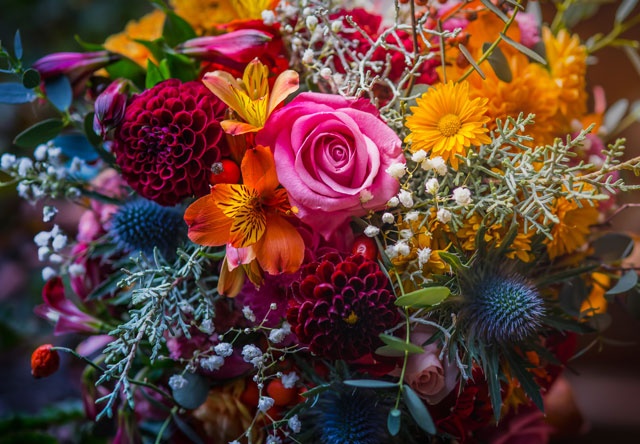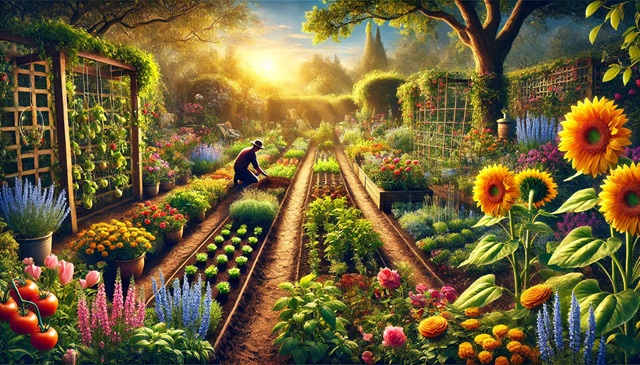That said, though, if you want to really learn to draw -- and if you want to be able to draw things that look real and not like some image from a coloring book, you have to learn to create the illusion of a three dimensional space on your two dimensional paper. You do that by using light and shadows.
As we pretty much said in the last section, light and shadows define objects. But drawing the light that you see can be a difficult task if you're a beginning artist. That's because you have to learn to see the light and shadows before you can draw them. You have to train your eyes to see like some of the most famous artists in the world.
Values, by definition, are the different shades of gray between white and black. When you draw, you'll use these values to create shading. The shading will represent the light and shadows.
Hatching and crosshatching are simple techniques for drawing shading, and we'll learn about those later. For now, you just need to know that those are shading techniques.
The different values are the basic ingredient for all the shading you'll do. When you learn to draw the values, you can add shading. When you can add shading, you can add depth to your drawings. Adding shading to your drawings gives the illusion of a three dimensional object, as already stated.
With shading, you can turn a simple object such as a circle into a three dimensional globe, as shown in the next illustration.
Objects have a three dimensional look when it appears like you can touch them on all sides and see all sides.
To be able to draw light and shadows, you need to be able to see and indentify:
- The light source. You have to be able to see the direction from which the light comes from. The way you place this light source will affect every aspect of your drawing.
- The shadows. These are the areas on the object that receive little or no light at all.
- The cast shadows. This is the dark area on a surface where light is blocked by a solid object.
Let's practice. Look at the drawing below of Cardinal Saint John Fisher:
- Where are the light values? Look for the lightest areas. These are highlights.
- Where are the dark values? These are often sections that are in shadow. If you locate the shadows, you can locate the light source.
- Where is the cast shadow? The section closest to the object is usually the darkest value in the drawing. Once you discover the cast shadow, you can easily determine which way the light is coming from.
Can you guess which way the light is coming from?
(If you guessed from the right, you would be correct!)
Being able to see the values is critical to being able to draw three dimensional-looking pictures. Some people can simply squint their eyes and simplify complex objects that way. That's because squinting filters out details so you can just see values and shapes. You see, your ultimate goal is to be able to see the values as shapes, and add them to your drawing using shading. When you can see the shapes created by values, you can draw more accurately.
Let's look at the picture from the last section again.
Squint your eyes and look at it. You'll see the darkest value take the shape of an "S" curve. Below is an illustration of the shapes created by the values.
Most drawings are in black and white, using graphite on white paper. Unfortunately, the world isn't in black and white, so you're going to have to learn to turn colors into values when you draw. The good news is that you can use squinting to do this too.
Below we've listed some pointers in helping you to translate your full color world into values:
Look at objects, but try to only look at the light and dark areas, not the colors. Then, squint your eyes to see the values. Make a mental note of where the lights and darks are located. Just don't worry if you can't do it right away. It takes time, and it takes practice.
|
Optional Assignment: Interested in learning more? Why not take an online How To Draw course?
Look at a colored photo with a lot of contrast (lights and darks). Squint to block out colors and details. Using your sketchbook, draw ONLY the simple shapes and the values, much like the illustration above. |
Hatching is simply a series of lines called a set. These lines are drawn close together so that they look like values.
Below you'll see an example of hatching.
Now, there are three factors that will affect how light or dark your values are that you create with hatching. These three things are:
1. How close the lines are together. If you put the lines closer together, the value will be darker.
2. The way you hold your pencil or other drawing media. If you press hard on a pencil, the color is darker. If you want a lighter value, loosen your grip and relax your strokes.
3. What kind of media that you use. We talked about this earlier when we discussed the different types of pencils. 2H, for example, is known for making lighter marks. A 6B pencil would be ideal for darker values.
Hatching is very easy to do, so go ahead and breathe a huge sigh of relief. The hardest part of learning to draw three dimensional objects and subjects is learning where to put shading. After learning to draw the objects and subjects, of course. However, once you learn to draw the basic shapes and grow into more complex ones, then practice with lighting, and hatching will be easy.
For this part of the article, it will be helpful if you grab your sketchbook. If you don't have one, a piece of paper and a pencil will work just fine. The quickest way to teach you is to show you.
1. Draw three squares on your sheet of paper.
2. Next, draw a set of parallel lines in the first square. If you have art supplies handy, use your 2H pencil.
3. In the second square, draw another set of parallel lines, but make them closer together than the first.
4. In the third square, do the same again, just put the lines closer together. If you have art supplies, use your 6B pencil. If you don't, simply press down harder to get darker values.
It's simple isn't it? And that's all there is to it. Just keep in mind that your hatching lines don't always have to be straight and solid. They can be curved, dotted, broken... anything you want. Hair is often drawn using hatching lines.
An example of hatching is illustrated in the picture below.
There may be times when you draw hatching lines that you don't want all the lines to have the same value. Picture a woman with brown hair. Imagine that she has highlights in her hair that are either from the light source -- or from blonde streaks. When drawing her hair and using hatching lines to do so, you wouldn't want to make all the lines the same value. To make them different values, you would have to use graduated values.
Graduated values are simply a progression of values. Whenever you have different values that meld together in a drawing because the values gradually change from one to the next (lighter to darker), this is called agraduation. You can use graduation to create highlights, but you can also use it to give an object a more three dimensional look. You might use graduation on a sphere. If you used the same values, it would just be colored darker. With a sphere, you might want to start with light values and progress to darker ones to give it the look of a light source as well as a three dimensional object.
The picture of the wolf shown above shows graduating values. The graduation shows the light on the wolf's nose and also the values of the fur. It's also exhibited in the picture below.
Crosshatching is simply when one set of lines crosses over, or overlaps, another. These lines can cross at any angle or interval just so you get your desired effect. An example is shown below:
Crosshatching is a great way to show different values. Use the same pencils as with hatching to create your value scales. Again, you can press harder with your pencil to get even darker shades. You can graduate values just the same way with hatching. Pull out your sketchbook and practice. You'll get better the more you do.
|
Optional Assignment: Practice crosshatching. Graduate values in your crosshatching. |
Mapping Values
The purpose of hatching and crosshatching is to make what you draw look realistic. However, before you even begin to add hatching or crosshatching, you need to identify where in your drawing it needs to go. In addition, you need to decide if you want to use hatching or crosshatching.
To do this, follow these four steps:
1. Find where your highlights and light values are. It's easier to find the light areas first. When you locate these areas, use your pencil to LIGHTLY draw the shapes of these values. You are mapping out where they go. If you want, you can label them. Maybe you'd want to use a "L" for light values.
2. Find the dark areas. These are easy to identify too. These may be in the shadows. Use your pencil again and lightly draw the shapes of these values. If you want to label them, you can use a "D" for dark.
3. Find the medium values. Again, draw the shapes in lightly. Use "M" for medium.
4. Note the transition or graduation in these values. Sometimes they'll be very obvious, but they may be more gradual. Once you have your dark and light values marked, you can use your pencils to shade in transitions.
Now that you have that done, you're ready to shade. It's easier if you start by drawing your light values and work your way to dark. That way, you can just add shading to create a more medium value. Then, you can create the dark on top of the medium. Just don't press TOO hard with your pencil. You'll leave dents in the paper, and you won't be able to touch those spots up later.
Remember, as you create your values using crosshatching and hatching:
- Draw the lightest shading around highlights first. Highlights should simply be the white sheet of paper showing through.
- Next, fill in the medium values.
- Now hatch or crosshatch the dark values and the shadows.
|
Optional Assignment: Sit a coffee mug on a table in front of you. Draw the mug, then map the values. Use hatching or crosshatching to shade. |


























